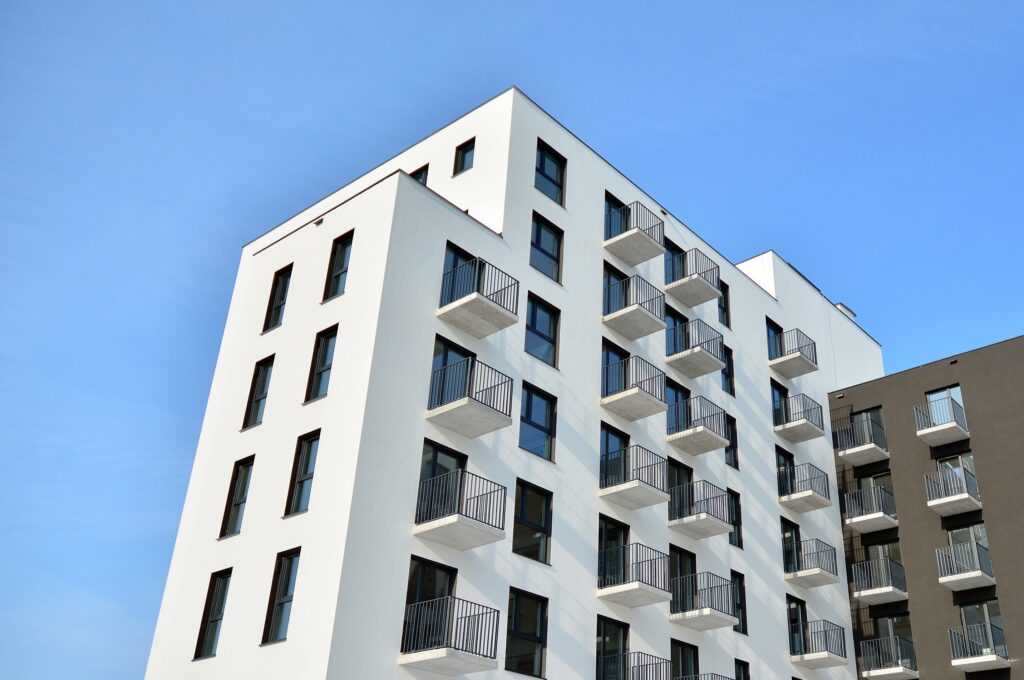When it’s time to leave your rental property, you’ll want to get your deposit back.
However, your landlord can make reasonable deductions from your deposit to cover certain costs or losses.
They are steps you can take to give you the best chance of getting your whole deposit back, though, and we’ve outlined them right here in this guide…
Can a landlord keep your deposit?
Your landlord can keep all or some of your deposit to cover end-of-tenancy costs associated with:
1. Poor cleanliness
One of the most common reasons for a landlord deducting from a tenant’s deposit is if the property is left in a state of uncleanliness.
In terms of cleanliness, your rental property should be left in the same condition it was in when you moved in.
2. Direct damage to the property or its contents
If you cause damage to your property or any contents provided by your landlord, they may deduct their costs for repair or replacement from your deposit.
Any deductions should be made on a like-for-like basis – for example, damage to a 15-year-old sofa shouldn’t mean a deduction is made for the full cost of a brand-new replacement.
3. Unpaid rent or bills
If you fail to keep up to date with your rent payments, or don’t pay your utility bills in full, your landlord may deduct those costs from your deposit.
4. Indirect damage caused by carelessness
Indirect damage refers to damage that wasn’t intentional but was caused by careless behaviour.
For example, if you cause a burn mark on a bedroom carpet because you forgot to turn off a set of hair straighteners, that would be classed as indirect damage and your landlord may make a deposit deduction to cover it.
5. Lost or stolen items
If you lose or steal any items included with the property at the start of your tenancy, your landlord may deduct the costs of replacing those items from your deposit.
6. Changes made to the property without permission
Decorating or making other changes to the property without your landlord’s permission could see them make a deduction from your deposit to put the property back how it was when you moved in.
How to get your deposit back: Top tips for tenants
The best way to get your deposit back at the end of your tenancy is to give your landlord no reasons to make any deductions.
It sounds simple, of course, but by following these tips, you’ll give yourself the best chance of a full deposit refund:
1. Make sure you’re prepared
If you wish to end your tenancy at the end of its fixed term, you’ll need to give your landlord two months’ notice.
That means you’ll have plenty of time to ensure you’ve met all your obligations and that the property is in a good condition ahead of your check-out.
Use the time wisely.
2. Read your tenancy agreement
Reading and understanding your tenancy agreement is hugely important.
The agreement outlines all your responsibilities and obligations as a tenant.
Re-reading it before you move out means you’ll fully understand everything you have to do.
If the agreement says you must keep the garden tidy, you’ll be able to do this before your check-out inventory.
Your tenancy agreement should also outline the checking out process and everything your landlord is responsible for, too.
3. Check your check-in inventory
Your inventory is another extremely important document, as this details the condition of the property when you moved in.
When your tenancy began, you should have run through the inventory and either signed it off as a true and accurate reflection of the properties condition or raised any concerns with your landlord or letting agent.
Re-visit the inventory before you move out and make sure you leave every room as it was when you moved in.
That means:
- The same level of cleanliness
- The same items in each room that are listed in the inventory
- Check the condition of each room and the items in it, too.
- If anything is damaged, report it to your landlord or letting agent right away.
4. Understand fair wear and tear
You may have heard of the phrase ‘fair wear and tear’ when it comes to rental properties.
Your landlord can’t make deductions from your deposit for damage classed as fair wear and tear, so understanding what does, and doesn’t, fall into this category is important.
| Damage | Fair wear and tear |
| A saucepan burn mark on the kitchen counter | Minor scratches on the kitchen counter caused by ongoing use |
| A burn mark on the bedroom carpet | A worn bedroom carpet caused by normal use over the term of the tenancy |
| A broken bed damaged by children jumping on it | A lumpy mattress caused by natural wear of springs over time |
| A hole in a wall caused by drilling | Scuff marks on a wall caused by moving items of furniture when moving in |
There are several other considerations when assessing fair wear and tear, including:
- The length of your tenancy
- The number of tenants living in the property
- The age of the tenants
- The condition of the property at the start of the tenancy
5. Tell your landlord about any damage
The best way to ensure a good relationship with your landlord is to communicate effectively.
So, if you cause some damage to the property or any items, report it to your landlord or letting agent right away.
Honesty is always the best policy.
6. Remove any rubbish from the property
Leaving piles of rubbish uncollected at your rental property when you move out could mean your landlord has grounds to deduct costs of disposing of it from your deposit.
Either put any rubbish out to be collected by the council at the correct times, or perhaps take a trip to your local recycling centre to dispose of items you no longer want.
Garden waste should also be correctly disposed of if your agreement states you’re responsible for maintaining outdoor spaces.
7. Leave the property as you found it
The most common reason for landlords deducting from tenancy deposits is poor cleanliness.
If your inventory shows that the property was spotless when you moved in, it will need to be spotless when you move out.
Fair wear and tear doesn’t extend to cleaning.
So, while a worn carpet may be classed as fair wear and tear, a dirty or stained carpet could result in your landlord requesting a deduction for replacement or cleaning.
8. Take meter readings and speak to utility companies
On the day you move out of your rental property, take meter readings, and inform your utility suppliers that you’re moving out.
They’ll then issue you with a final bill, which should be paid right away.
Your landlord is entitled to deduct from your deposit if any utility bills remain unpaid, so always stay up to date with your payments and settle at the end of your tenancy.
9. Ventilate the property
Another big problem in rental properties can be condensation.
This can result in mould growth, which could subsequently result in a deposit deduction to fix.
While damp can often be caused by issues with the property out of your control as a tenant, condensation is often caused by tenant actions.
So, always keep your rental property well ventilated by:
- Using extractor fans when cooking or bathing if fitted
- Opening windows when cooking or bathing if no extractor fans are fitted
- Not drying clothes on radiators
- Keeping a consistent temperature in the property and not allowing it to become too cold
10. Pay your rent
The most important obligation you have as a tenant is to pay your rent in full and on time.
As well as a potential deposit deduction at the end of the tenancy for any unpaid rent, severe rent arrears could mean your landlord has grounds to evict you before the end of your tenancy.
How long does a landlord have to return a deposit?
Once you’ve reached an agreement with your landlord over how much of your deposit is being returned, the amount must be returned to you within 10 days.





